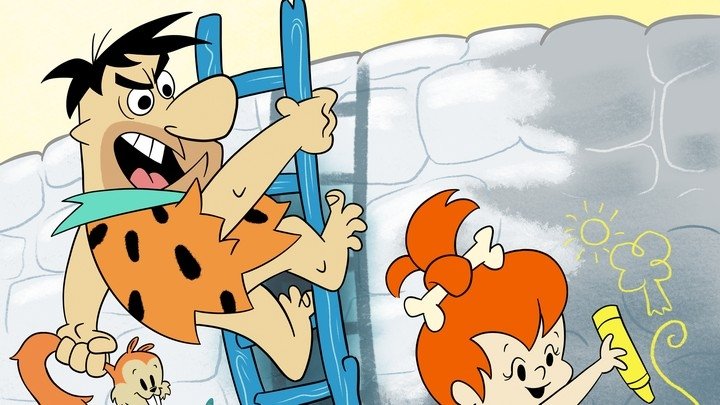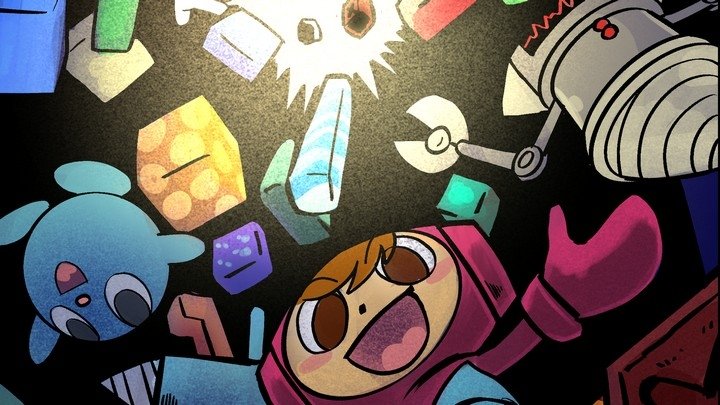Thirty years later, Batman is still Batman
The 1989 film was a legendary reboot, but what actually changed about the Caped Crusader?
Batman is old. I know, I know, he doesn't look his age. People like to joke that Batman has no superpowers (or if he does, it's "wealth" or "white privilege") but every few years his age resets. Everything about him resets: his costume, house, his car, his lair, his friends and enemies, they all reset. We in the audience notice the change, but he never does. Batman continues to be Batman, no matter what.
Today marks the 30th anniversary of a major reset in the history of Batman: on June 23, 1989, Batman starred in his own movie, directed by Tim Burton and starring Michael Keaton. It was hardly his most dramatic reset - just about everything traditionally in Batman's life was there, save for Robin - but it created a major stir with ramifications that still affect us today. Batman (1989) gave birth to the dark-and-gritty reboot, kickstarting the edgy-90s and leading directly to our modern cinematic universe where superheroes are serious and they rake in serious money to match.
To connect the dots we must begin with Batman's elder brother, the quintessential superhero whose 1938 genesis birthed the genre as we know it: Superman. Both Superman and Batman were popular comic book characters for decades, leading them to spread into other mediums such as radio, television, and cartoons. When Superman transitioned to a feature-length eponymous motion picture in 1978, it was a global hit with critics and audiences alike. Significantly, while the world surrounding the character was brought into the then-modern era of the late 1970s, his costume and personality were very much left alone. When Superman pledges to Lois in the film to fight for "truth, justice, and the American way," Lois laughs. But he doesn't flinch, because he believes it.
Batman's road to the silver screen was rockier. It's not that the character lacked name recognition or fans, it's that he lacked credibility. Ever since the Batman TV series of the late 1960s, Batman was associated with comedy. It didn't matter that the character's long history included light and dark periods over the years; back then, when the public at large heard the name Batman, they thought of Adam West spraying "shark repellent bat spray" on a stiff rubber fish attached to his leg.
The hiring of Tim Burton and Michael Keaton did not help the public's perception of the new Batman film. Burton was still an up-and-coming director with just two major releases to his name, Pee-Wee's Big Adventure and Beetlejuice - both comedies. Michael Keaton was an established star but he too was largely seen as a comic actor - he had played the title role in Burton's Beetlejuice - leading fans to decry the choices publicly and even start campaigns begging the studio to reconsider ((does any of this sound familiar).
Regardless of what the vocal minority thought the tone of Batman would be, the marketing of the film was unambiguously all about black. Batman as a hero was typically depicted wearing a blue and gray costume. This was his look in the 1960s show, the 1970s cartoons, and even in the "serious" comics of the 1980s such as The Dark Knight Returns and The Killing Joke (these books were often cited as direct inspirations for the film). Instead, Batman is all about black. Black suit, black car, black eye makeup. The film's iconic poster was all black save for a new gold-trimmed logo; this image would be printed on all conceivable merchandise throughout the year, leading to the manufacturing of mountains of copycat goods. As a 12-year-old I remember begging my parents for a shirt with the new Batman logo and each time they tried to get me one, they purchased a knock-off (somehow my mom managed to get an authentic one on a sweatshirt for herself though).
Black would turn out to be more than a purely aesthetic choice: in Batman, the Caped Crusader has little time for humor or banter. While Batman's usage of gadgets and technology is present on screen, his primary weapon in the film is fear. By attacking from the shadows and using smoke bombs, Batman relies on shadows as his sidekick. However, when all else fails, he has no qualms about direct assault with automatic weapons and even bombs. Batman has a body count and it's in the double-digits.
Why does a character with a history of avoiding guns and death suddenly condone extra-judicial killing? Because Batman never resets in a vacuum. The 1980s were a tumultuous time and not everything was turquoise and pink. New York City, Gotham City's real-life counterpart, was emerging from decades of record crime rates and the people were fed up. When a subway rider shot four teenagers, half the city cheered. When a jogger was attacked and left for dead, one famous New Yorker called for the execution of her allged teenage assailants, helping lead the charge to reinstate New York's death penalty in the 1990s.
Action movies and television at the time were all about justice, particularly street justice with personal stakes. Rocky went from the story of an underdog to the story of a champion who fights each new challenger in memory of his most recently deceased friend. Rambo went from a tale of PTSD to a tale of one vet returning to Vietnam and winning the war by himself (but only after his new girlfriend dies). Even comedies like Ghostbusters feature everyday citizens stepping up to do a job that the city of New York is ill-equipped to handle. A 1980s Batman had to be tough on crime and do a better job than any police commissioner, district attorney, or mayor ever could.
(One direct reference in the film that may be lost on modern viewers or non-New Yorkers: the mayor of Gotham in Batman as played by Lee Wallace is the spitting image of Ed Koch who was the sitting mayor of New York City when the film premiered)
So Batman hit multiplexes and made a ton of cash, leading to sequel after sequel, each sillier than the last, until the franchise died in less than ten years. Every contemporary attempt to cash in on the "comic book movie" failed: Dick Tracy premiered a year later with Batman-levels of hype but did not deliver Batman-levels of ticket sales, big-budget interpretations of The Phantom and Judge Dredd went nowhere, and the less said about Marvel movies of this era, the better.
But as the 90s wore on, the impact of Batman became more apparent. After the day-glo 80s were pronounced dead, black was the dominant color of everything. As the movie sequels grew campier, an animated Batman on television proved to be more successful, spawning an entire "universe" of characters who all interact with one another (what a concept). And by the end of the 90s several comic book films did hit it big, largely by aping the Batman formula: everyone dressed in black and took everything seriously because comics are NOT just for kids anymore.
For better or for worse, history has shown Batman is reluctant to stray from his 1989 persona. When Batman reset again in 2005, the people on and off screen changed but the formula did not: very black, very serious. The new Batman was a hit, unlike Superman Returns (2006) which deliberately looked to the 1970s films for inspiration as audiences looked elsewhere. So in 2013 we got another Superman only he is drained of colors. He is very conflicted and sad for most of the film and eventually he just kills a guy. This led to a sequel of increased grimness and the return of Batman all so he and Superman could become enemies and have a drawn-out fight without a hint of levity - unless you count the unintended hilarity of how their dispute is concluded.
At present, Batman (1989) occupies a unique space in the history of media. It successfully reimagined a popular character and created a long wake which we continue to occupy today. How often do we hear the refrain of "not for kids anymore" when a big-budget TV show, film, or video game seeks to distance itself from past incarnations? Gritty reboots have become cliche, yet they do not seem to be slowing down; the biggest change in the past 30 years has been promotional pop songs have been replaced by somber, slow covers of old pop songs.
On the other hand, viewing Batman with 2019 eyes shows it's sillier than anyone gave it credit for in 1989 ("I made you, you made me first!") and I know I'd much rather sit through the absurd Batman & Robin over Batman v Superman or even its muddled sequel Justice League which tried to un-grim what was already too grim to live. Maybe Batman will always be camp. Maybe pressing the reset button can only change so much about a man who fights crime dressed as a bat.
30 years later, I'm happy to report I'm comfortable enjoying Batman (1989) and Batman (1966) - along with Lego Batman (2017) - because whether he's represented by a living breathing actor or a piece of plastic, Batman's still Batman and I look forward to what Batman comes next.




